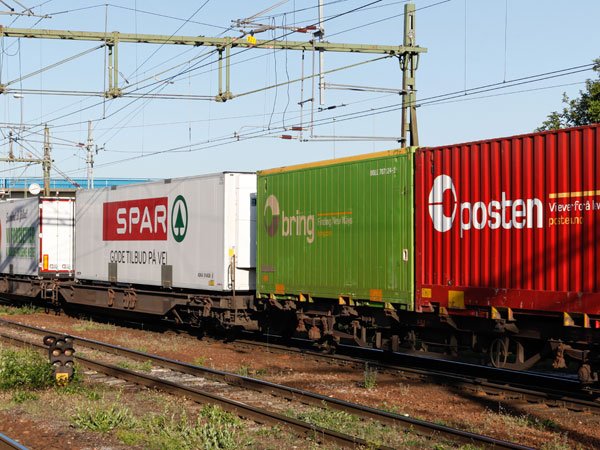Shift2Rail is a European railway project that works actively to create innovations within the railway sector. IMPACT-2 is a project within Shift2Rail that follows and evaluates the innovation projects. How are the innovations coming along? Are they beneficial to society?
The coordinator for IMPACT-2 is the Swedish Transport Administration, which in turn engaged VTI to conduct some of the research. At VTI’s Stockholm office, Ida Kristoffersson, researcher in traffic analysis and logistics, is one of the project managers within IMPACT-2.
To understand what IMPACT-2 is all about, the starting point is Shift2Rail.

Freight train passing Hallsberg, Sweden. Photo: Michael Erhardsson/Mostphotos
“Shift2Rail is a research project within one of the EU framework programmes, in which the train industry, the transport authorities and the research sector have joined forces in order to work together for innovations within the railway sector,” Ida Kristoffersson explains.
Among the founding members are Bombardier, Siemens and the Swedish Transport Administration. Associated members include Deutsche Bahn and the French SNCF. There are also consortia among the associated members, which in turn consist of a number of different companies and organisations. In short, the project is gigantic.
“Five areas of innovation have been defined,” continues Ida Kristoffersson. These areas are Rolling stock, Control, command and communication systems, Infrastructure, IT solutions and Rail freight.
Four market segments are in focus: high-speed passenger rail, regional passenger rail, metro and rail freight transport.
“And within IMPACT-2, we evaluate the work that is taking place within the various areas of innovation. Are these solutions useful to society? The range of activities is very broad, and we are looking at the full spectrum.”
Transition to rail
Ida Kristoffersson leads work package three (of nine), which focuses on the transition to rail from other modes of transport.
“When it comes to freight transport, we study the Hallsberg-Hamburg corridor and utilise a transport model called SAMGODS. The goal of Shift2Rail is to move transports from other modes to the more environmentally-friendly railway, but to what extent do innovations lead to transition?”
At present, there are dense train movements on many railway tracks in Europe. Some critical railway links in Sweden operate almost at maximum capacity, as regards both passenger and freight trains.
“This is precisely the reason why Shift2Rail was conceived. With the help of various innovations, are we able to increase capacity? For example, with more efficient signalling systems? Today, we also have a rather large problem regarding the shunting yards, where the transhipment takes a very long time. This means that producers of perishable goods are reluctant to use the railway, as they are unsure whether the goods will still be fresh when they arrive. Here, Shift2Rail is attempting to develop concepts for automated transhipment, an automation that is expected to reduce the handling time.”
Ida Kristoffersson emphasises that there is a lot happening within the railway sector, and that it is very rewarding to work with a project like IMPACT-2 in the current climate.
“IT solutions for managing ticket bookings and information is another area where much will happen in the future.”
The future IMPACT-2 scenarios are expected to take place around 2040.
We are currently writing 2019. At present, buying a train ticket to Europe is almost impossible. Will it be easier in 2040?
“Yes, I am convinced that it will be.”
Text: Catarina Gisby/redakta
 Contact:
Contact:
Ida Kristoffersson
ida.kristoffersson@vti.se
VTI, Sweden






Follow us: